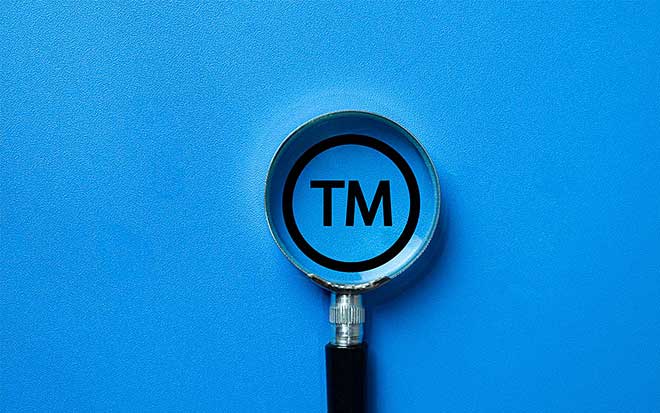Nov. 12, 2025
USPTO Proposed IPR Rule Changes – October 16, 2025
Summary of Proposed Rule Changes
On October 16, 2025, the United States Patent and Trademark Office (USPTO) issued a proposed rulemaking notice regarding significant changes to the procedures for instituting inter partes review (IPR) proceedings. The 30-day public comment period for these proposed rules will expire on November 15, 2025, and the USPTO will consider feedback received as it moves toward potential finalization and implementation.
Main Points
Stipulation Requirement for IPR Petitioners: Petitioners seeking institution of an IPR will be required to file a stipulation agreeing not to pursue invalidity challenges under 35 U.S.C. §§ 102 (novelty) or 103 (obviousness) in any other forum. As drafted, the proposed language would expand the current estoppel provisions. Currently, challenges can still be made under §102 in District Court after an IPR to show the invention was in “public use,” “on sale,” or “otherwise available to the public” because those grounds cannot be raised in an IPR. If the proposed language is adopted, a party that subsequently found evidence of, for example, an “on sale” bar would be precluded from ever raising that ground because, as proposed, the stipulation prevents all challenges under §102 and is not limited to grounds that were raised or could have been raised in an IPR. The stipulation, however, does not prevent a party from pursuing challenges under §§ 101 or 112 or of inequitable conduct.
The proposed rule changes reflect the USPTO’s ongoing efforts to streamline patent validity challenges, reduce duplicative litigation, and respect the outcomes of prior adjudications. Requiring petitioners to stipulate against pursuing parallel invalidity challenges may foster greater efficiency and reduce the burden on both courts and patent owners. However, it could also limit petitioners’ strategic options, particularly in complex cases involving multiple parties or related litigation. Further, while this proposed change is aimed at preventing duplicative litigation and forum shopping, it may drive Petitioners away from the Patent Trial and Appeal Board (PTAB) and back towards the District Courts to avoid the stipulation requirement, which limits the patent challengers ability to challenge a patent even on certain grounds that cannot be raised in IPRs.
Preclusion Based on Prior Adjudication or Likelihood of Earlier Determination: The USPTO will not institute an IPR if the Office itself or another forum (such as a District Court or the International Trade Commission) has already adjudicated the patentability or validity of the challenged claims (regardless of the parties involved). Further, the USPTO will decline to institute an IPR when another proceeding is likely to resolve the validity or patentability of the claims under §§ 102 or 103 before a final decision in the petitioned IPR. This applies to prior decisions and other proceedings likely to conclude before the petitioned IPR.
The preclusion will operate as a double-edged sword for small to medium sized entities. On one side, a smaller entity patent owner that has previously survived a challenge may feel safer from further attacks through IPR. In contrast, a smaller entity with fewer resources could be forced to litigate in the more costly venues and is no longer afforded the lower invalidity standards of an IPR.
This proposed rule formalizes the PTAB’s recent practice of discretionary denials based on a likelihood of earlier determinations by another forum. Time to trial in district court litigation, however, is not always well defined and is often extended significantly. Denying an IPR based on what is often tentative and uncertain timing of District Court litigation may introduce variability into the review process for patent challengers and limit access to a consistent administrative forum for patentability determinations.
The preclusion of an IPR based on prior or likely determinations in other forums aims to minimize conflicting decisions and conserve judicial resources. While intending to respect prior determinations and promote judicial economy, this rule may make validity challenges a more costly endeavor for a petitioner who wants to challenge a previously upheld invention. A party will be unable to proceed with a more economic IPR and will effectively be limited to the District Court.
Further, parties not in privity with a prior petitioner would be precluded from the institution of an IPR when the claims have been found “not invalid” by a District Court, a final decision of the International Trade Commission, a previous IPR decision, found “patentable” in an office action or PTAB decision under ex parte reexamination, or was found “patentable” during a reversal of a Federal Circuit decision by the Court of Appeals for the Federal Circuit. While this approach supports consistency and finality, it may also reduce opportunities for reconsideration of validity issues, especially in cases where new evidence emerges or where prior adjudications lack thorough analysis.
Exception for Exceptional Circumstances: The Director of the USPTO would retain discretion to institute an IPR notwithstanding prior adjudication or the likelihood of an earlier determination, but only in “exceptional circumstances.”
The inclusion of an “exceptional circumstances” exception provides necessary flexibility but may introduce uncertainty regarding how and when the Director of the USPTO will exercise its discretion. The proposed changes recite that the “exceptional circumstances” cannot include new or additional prior art, new expert testimony, new caselaw (unless the prior challenge is rendered irrelevant by a substantial statutory change or Supreme Court precedent), or because a prior challenger’s failure to appear. In contrast, the rules do not exhaustively define what constitute exceptional circumstances, leaving room for case-by-case analysis and leaving practitioners to wonder as to what situations qualify as exceptional.
Overall, these proposals seek to balance efficiency, fairness, and the need for robust validity review. However, the proposed rules also severely limit the previous benefits a patent challenger previously derived from IPRs. It is likely that if these changes go into effect, the PTAB will see a decrease in the number of IPR filings, as patent challengers may only file in the District Court to reduce the risk of forgoing certain grounds. The USPTO’s consideration of public comments will be critical in refining the rules to address practitioners’ concerns and promote a more effective patent system.
Anyone wishing to submit feedback on the proposed rules should do so by November 15, 2025. Practitioners are encouraged to closely monitor these developments, as adoption of the proposed language may require careful consideration when choosing between pursuing an IPR or litigating in District Court. The scope of available grounds for challenging patent validity could become unintentionally limited, making strategic decision-making especially important.




